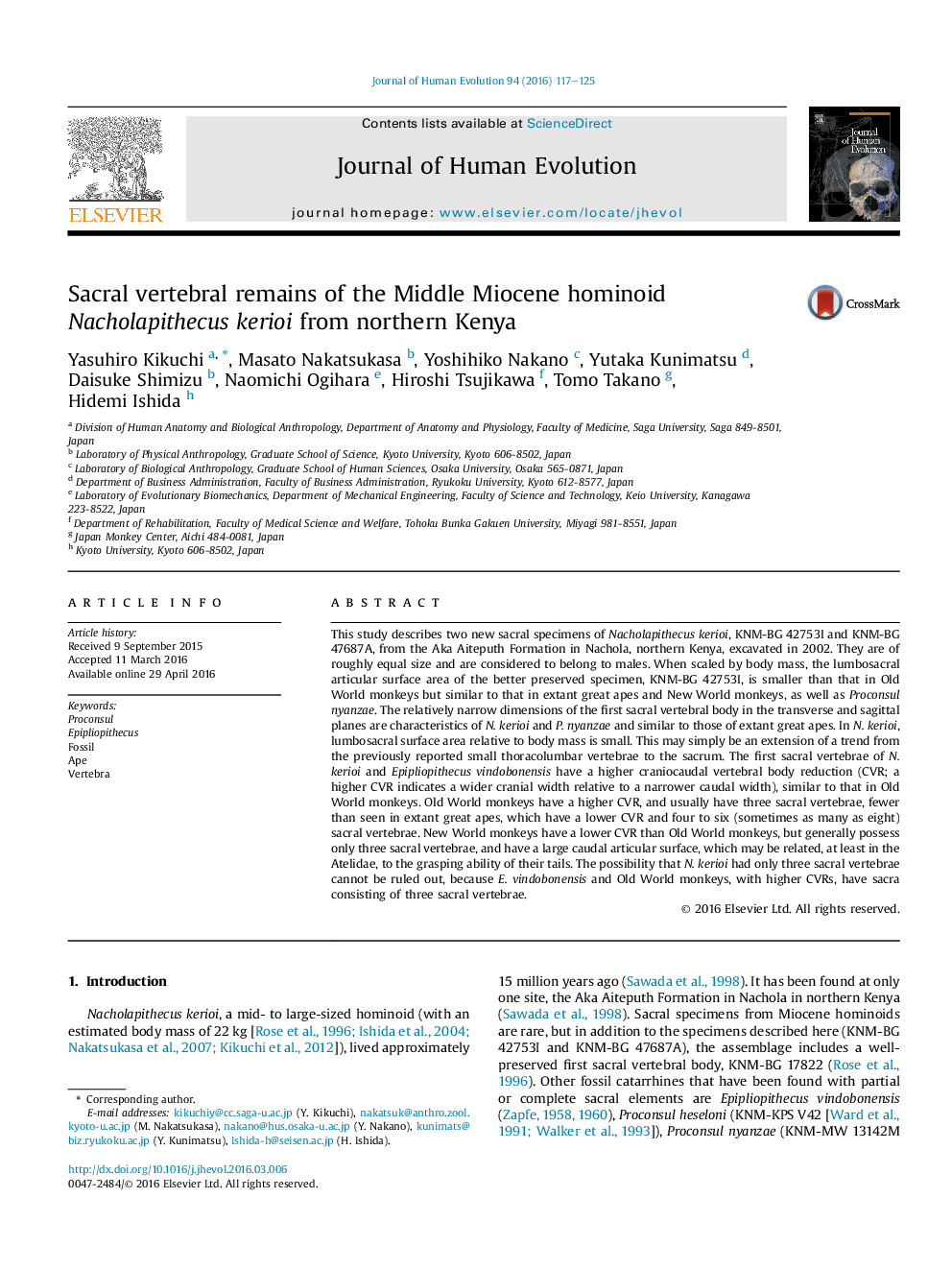| کد مقاله | کد نشریه | سال انتشار | مقاله انگلیسی | نسخه تمام متن |
|---|---|---|---|---|
| 6389105 | 1628155 | 2016 | 9 صفحه PDF | دانلود رایگان |
This study describes two new sacral specimens of Nacholapithecus kerioi, KNM-BG 42753I and KNM-BG 47687A, from the Aka Aiteputh Formation in Nachola, northern Kenya, excavated in 2002. They are of roughly equal size and are considered to belong to males. When scaled by body mass, the lumbosacral articular surface area of the better preserved specimen, KNM-BG 42753I, is smaller than that in Old World monkeys but similar to that in extant great apes and New World monkeys, as well as Proconsul nyanzae. The relatively narrow dimensions of the first sacral vertebral body in the transverse and sagittal planes are characteristics of N. kerioi and P. nyanzae and similar to those of extant great apes. In N. kerioi, lumbosacral surface area relative to body mass is small. This may simply be an extension of a trend from the previously reported small thoracolumbar vertebrae to the sacrum. âThe first sacral vertebrae of N. kerioi and Epipliopithecus vindobonensis have a higher craniocaudal vertebral body reduction (CVR; a higher CVR indicates a wider cranial width relative to a narrower caudal width), similar to that in Old World monkeys. Old World monkeys have a higher CVR, and usually have three sacral vertebrae, fewer than seen in extant great apes, which have a lower CVR and four to six (sometimes as many as eight) sacral vertebrae. New World monkeys have a lower CVR than Old World monkeys, but generally possess only three sacral vertebrae, and have a large caudal articular surface, which may be related, at least in the Atelidae, to the grasping ability of their tails. The possibility that N. kerioi had only three sacral vertebrae cannot be ruled out, because E. vindobonensis and Old World monkeys, with higher CVRs, have sacra consisting of three sacral vertebrae.
Journal: Journal of Human Evolution - Volume 94, May 2016, Pages 117-125
